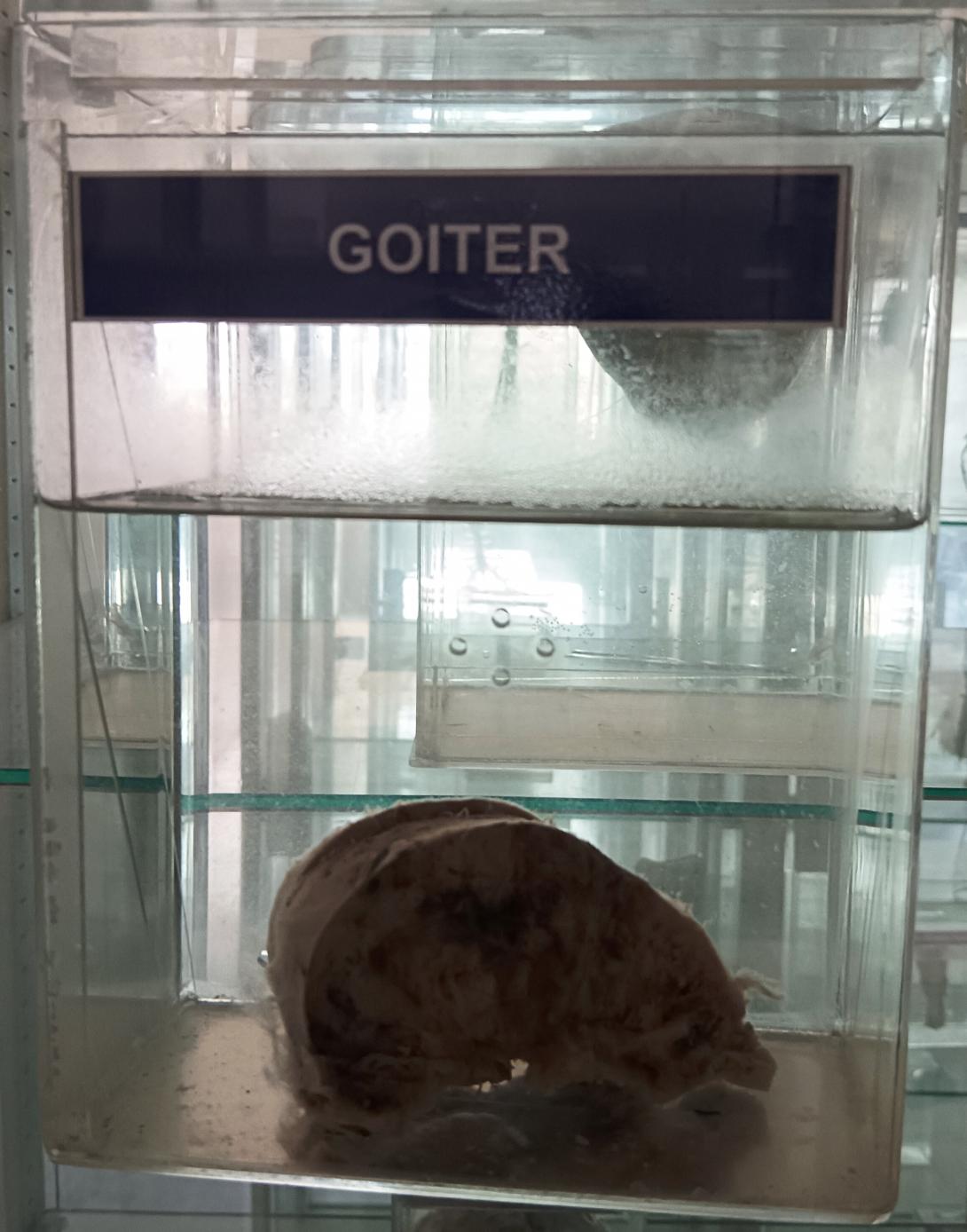- Definition: Goiter is an enlargement of the thyroid gland, which can result from a variety of causes.
- Anatomy: The thyroid gland is located in the anterior neck, just below the larynx. It consists of two lobes connected by an isthmus. The gland is made up of follicles, which contain colloid and produce thyroid hormones.
- Types of goiter: Chaurasia notes that goiter can be classified into three types based on the size and shape of the gland: diffuse goiter (uniform enlargement of the gland), nodular goiter (enlargement due to one or more nodules), and multinodular goiter (enlargement due to multiple nodules).
- Causes: Chaurasia lists a number of causes of goiter, including iodine deficiency, autoimmune diseases (such as Hashimoto's thyroiditis), genetic defects, infections, and exposure to radiation.
- Symptoms: The most common symptom of goiter is a visible swelling in the neck. Other symptoms may include difficulty swallowing, hoarseness, and shortness of breath.
- Diagnosis: Chaurasia notes that diagnosis of goiter involves a physical examination of the neck, along with blood tests to check thyroid hormone levels and imaging studies (such as ultrasound) to evaluate the size and structure of the gland.
- Treatment: Treatment for goiter depends on the underlying cause and the severity of symptoms. Chaurasia notes that mild cases of goiter may not require treatment, while more severe cases may be treated with medications (such as thyroid hormone replacement or iodine supplementation) or surgery (such as thyroidectomy).
- Complications: Chaurasia notes that complications of goiter can include compression of nearby structures (such as the trachea or esophagus), difficulty breathing or swallowing, and in rare cases, thyroid cancer
Rack Number
Specimen Number
25

